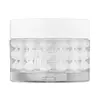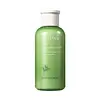What's inside
What's inside
 Key Ingredients
Key Ingredients

 Benefits
Benefits

 Concerns
Concerns

 Ingredients Side-by-side
Ingredients Side-by-side

Water
Skin ConditioningDipropylene Glycol
Humectant1,2-Hexanediol
Skin ConditioningGlycerin
HumectantButylene Glycol
HumectantIsopropyl Isostearate
EmollientCarbomer
Emulsion StabilisingButyrospermum Parkii Butter
Skin ConditioningStearyl Alcohol
EmollientHydrogenated Polyisobutene
EmollientDimethicone
EmollientArginine
MaskingSynthetic Beeswax
Emulsion StabilisingSorbitan Stearate
EmulsifyingPolysorbate 60
EmulsifyingPanthenol
Skin ConditioningPalmitic Acid
EmollientC14-22 Alcohols
Emulsion StabilisingAmmonium Acryloyldimethyltaurate/Vp Copolymer
Hydrogenated Lecithin
EmulsifyingParfum
MaskingAdenosine
Skin ConditioningPolyacrylate-13
C12-20 Alkyl Glucoside
EmulsifyingTocopheryl Acetate
AntioxidantDisodium EDTA
Polyisobutene
Sodium Hyaluronate
HumectantLinalool
PerfumingLimonene
PerfumingPolysorbate 20
EmulsifyingSorbitan Isostearate
EmulsifyingPropanediol
SolventGeraniol
PerfumingMethyl Lactate
PerfumingMentha Haplocalix Extract
MaskingGlucose
HumectantTuber Magnatum Extract
Skin ConditioningCaprylyl Glycol
EmollientEthylhexylglycerin
Skin ConditioningHydroxypropyl Cyclodextrin
MaskingAcetyl Hexapeptide-8
HumectantIsoleucine
Skin ConditioningGlutathione
Phenylalanine
MaskingTropolone
Skin ConditioningTryptophan
MaskingThreonine
Copper Tripeptide-1
Skin ConditioningValine
MaskingCystine
MaskingGlutamine
Skin ConditioningGlycine
BufferingSerine
MaskingMethionine
Skin ConditioningAlanine
MaskingProline
Skin ConditioningLysine
Skin ConditioningGlutamic Acid
HumectantHistidine
HumectantLeucine
Skin ConditioningAspartic Acid
MaskingAsparagine
MaskingTyrosine
MaskingWater, Dipropylene Glycol, 1,2-Hexanediol, Glycerin, Butylene Glycol, Isopropyl Isostearate, Carbomer, Butyrospermum Parkii Butter, Stearyl Alcohol, Hydrogenated Polyisobutene, Dimethicone, Arginine, Synthetic Beeswax, Sorbitan Stearate, Polysorbate 60, Panthenol, Palmitic Acid, C14-22 Alcohols, Ammonium Acryloyldimethyltaurate/Vp Copolymer, Hydrogenated Lecithin, Parfum, Adenosine, Polyacrylate-13, C12-20 Alkyl Glucoside, Tocopheryl Acetate, Disodium EDTA, Polyisobutene, Sodium Hyaluronate, Linalool, Limonene, Polysorbate 20, Sorbitan Isostearate, Propanediol, Geraniol, Methyl Lactate, Mentha Haplocalix Extract, Glucose, Tuber Magnatum Extract, Caprylyl Glycol, Ethylhexylglycerin, Hydroxypropyl Cyclodextrin, Acetyl Hexapeptide-8, Isoleucine, Glutathione, Phenylalanine, Tropolone, Tryptophan, Threonine, Copper Tripeptide-1, Valine, Cystine, Glutamine, Glycine, Serine, Methionine, Alanine, Proline, Lysine, Glutamic Acid, Histidine, Leucine, Aspartic Acid, Asparagine, Tyrosine
Water
Skin ConditioningPropanediol
SolventPentaerythrityl Tetraethylhexanoate
Emollient1,2-Hexanediol
Skin ConditioningHydrogenated Poly(C6-14 Olefin)
EmollientC14-22 Alcohols
Emulsion StabilisingCarbomer
Emulsion StabilisingTromethamine
BufferingC12-20 Alkyl Glucoside
EmulsifyingParfum
MaskingEthylhexylglycerin
Skin ConditioningDisodium EDTA
Camellia Sinensis Leaf Extract
AntimicrobialGlycine Soja Oil
EmollientLinalool
PerfumingLimonene
PerfumingButylphenyl Methylpropional
PerfumingCitronellol
PerfumingGlucose
HumectantHexyl Cinnamal
PerfumingAlthaea Officinalis Root Extract
Skin ConditioningWater, Propanediol, Pentaerythrityl Tetraethylhexanoate, 1,2-Hexanediol, Hydrogenated Poly(C6-14 Olefin), C14-22 Alcohols, Carbomer, Tromethamine, C12-20 Alkyl Glucoside, Parfum, Ethylhexylglycerin, Disodium EDTA, Camellia Sinensis Leaf Extract, Glycine Soja Oil, Linalool, Limonene, Butylphenyl Methylpropional, Citronellol, Glucose, Hexyl Cinnamal, Althaea Officinalis Root Extract
Ingredients Explained
These ingredients are found in both products.
Ingredients higher up in an ingredient list are typically present in a larger amount.
1,2-Hexanediol is a synthetic liquid and another multi-functional powerhouse.
It is a:
- Humectant, drawing moisture into the skin
- Emollient, helping to soften skin
- Solvent, dispersing and stabilizing formulas
- Preservative booster, enhancing the antimicrobial activity of other preservatives
We don't have a description for C12-20 Alkyl Glucoside yet.
C14-22 Alcohols is made up of synthetic fatty alcohols. More specifically, these fatty alcohols contain 14 to 22 carbons in the alkyl chain.
Its main purpose is to stabilize products. As an emulsifier, it helps prevent waters and oils from separating.
Carbomer is a polymer of acrylic acid. Its main role is to create a gel consistency.
A high amount of carbomer can cause pilling or balling up of products. Don't worry, most products contain 1% or less of carbomer.
Disodium EDTA plays a role in making products more stable by aiding other preservatives.
It is a chelating agent, meaning it neutralizes metal ions that may be found in a product.
Disodium EDTA is a salt of edetic acid and is found to be safe in cosmetic ingredients.
Learn more about Disodium EDTAEthylhexylglycerin (we can't pronounce this either) is commonly used as a preservative and skin softener. It is derived from glyceryl.
You might see Ethylhexylglycerin often paired with other preservatives such as phenoxyethanol. Ethylhexylglycerin has been found to increase the effectiveness of these other preservatives.
Glucose is a simple sugar and is the most important source of energy in all organisms.
In skincare, glucose is used to hydrate the skin. It also acts as a prebiotic for our natural biome.
Glucose is hydrating due to its humectant property. As a humectant, glucose draws moisture from the air and from deeper levels in the skin.
Our skin contains many sugars that act as prebiotics and help strengthen our natural microbiome. Having a healthy microbiome helps protect our skin from harmful bacteria and other contaminants.
Studies show glucose may help with fading discoloration and pigmentation. This is because our skin metabolizes glucose into lactic acid. Lactic acid is an AHA that helps exfoliate the top layer of skin.
Learn more about GlucoseLimonene is a fragrance that adds scent and taste to a formulation.
It's found in the peel oil of citrus fruits and other plants such as lavender and eucalyptus. The scent of limonene is generally described as "sweet citrus".
Limonene acts as an antioxidant, meaning it helps neutralize free radicals.
When exposed to air, oxidized limonene may sensitize the skin. Because of this, limonene is often avoided by people with sensitive skin.
The term 'fragrance' is not regulated in many countries. In many cases, it is up to the brand to define this term. For instance, many brands choose to label themselves as "fragrance-free" because they are not using synthetic fragrances. However, their products may still contain ingredients such as essential oils that are considered a fragrance.
Learn more about LimoneneLinalool is a fragrance and helps add scent to products. It's derived from common plants such as cinnamon, mint, citrus, and lavender.
Like Limonene, this ingredient oxidizes when exposed to air. Oxidized linalool can cause allergies and skin sensitivity.
This ingredient has a scent that is floral, spicy tropical, and citrus-like.
Learn more about LinaloolParfum is a catch-all term for an ingredient or more that is used to give a scent to products.
Also called "fragrance", this ingredient can be a blend of hundreds of chemicals or plant oils. This means every product with "fragrance" or "parfum" in the ingredients list is a different mixture.
For instance, Habanolide is a proprietary trade name for a specific aroma chemical. When used as a fragrance ingredient in cosmetics, most aroma chemicals fall under the broad labeling category of “FRAGRANCE” or “PARFUM” according to EU and US regulations.
The term 'parfum' or 'fragrance' is not regulated in many countries. In many cases, it is up to the brand to define this term.
For instance, many brands choose to label themselves as "fragrance-free" because they are not using synthetic fragrances. However, their products may still contain ingredients such as essential oils that are considered a fragrance by INCI standards.
One example is Calendula flower extract. Calendula is an essential oil that still imparts a scent or 'fragrance'.
Depending on the blend, the ingredients in the mixture can cause allergies and sensitivities on the skin. Some ingredients that are known EU allergens include linalool and citronellol.
Parfum can also be used to mask or cover an unpleasant scent.
The bottom line is: not all fragrances/parfum/ingredients are created equally. If you are worried about fragrances, we recommend taking a closer look at an ingredient. And of course, we always recommend speaking with a professional.
Learn more about ParfumPropanediol is an all-star ingredient. It softens, hydrates, and smooths the skin.
It’s often used to:
Propanediol is not likely to cause sensitivity and considered safe to use. It is derived from corn or petroleum with a clear color and no scent.
Learn more about PropanediolWater. It's the most common cosmetic ingredient of all. You'll usually see it at the top of ingredient lists, meaning that it makes up the largest part of the product.
So why is it so popular? Water most often acts as a solvent - this means that it helps dissolve other ingredients into the formulation.
You'll also recognize water as that liquid we all need to stay alive. If you see this, drink a glass of water. Stay hydrated!
Learn more about Water